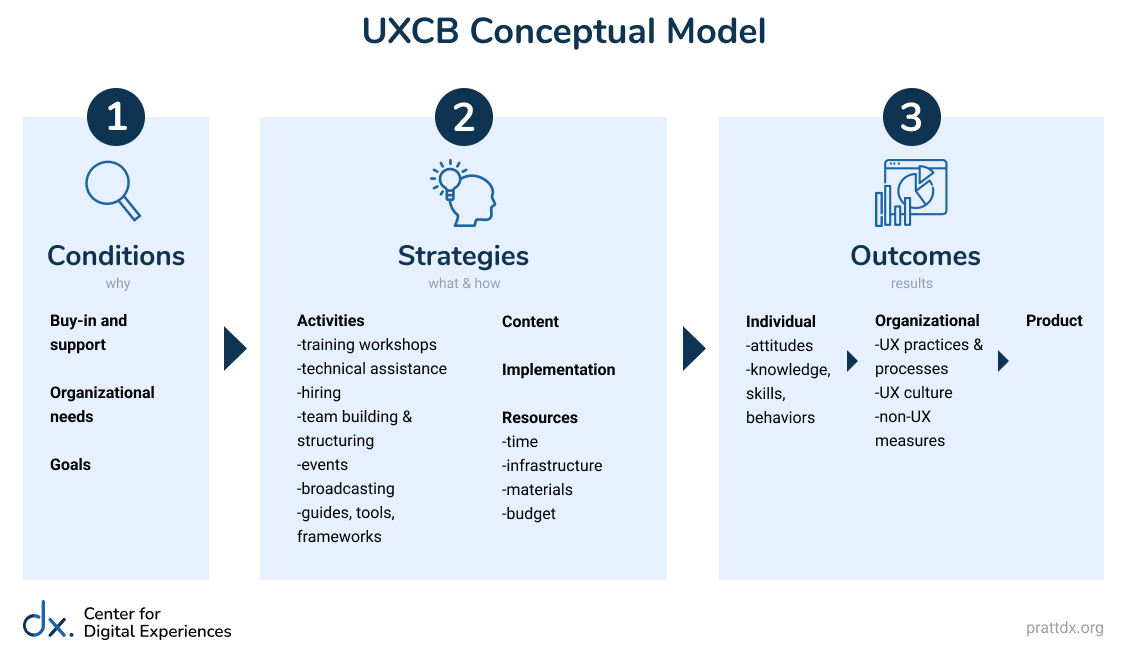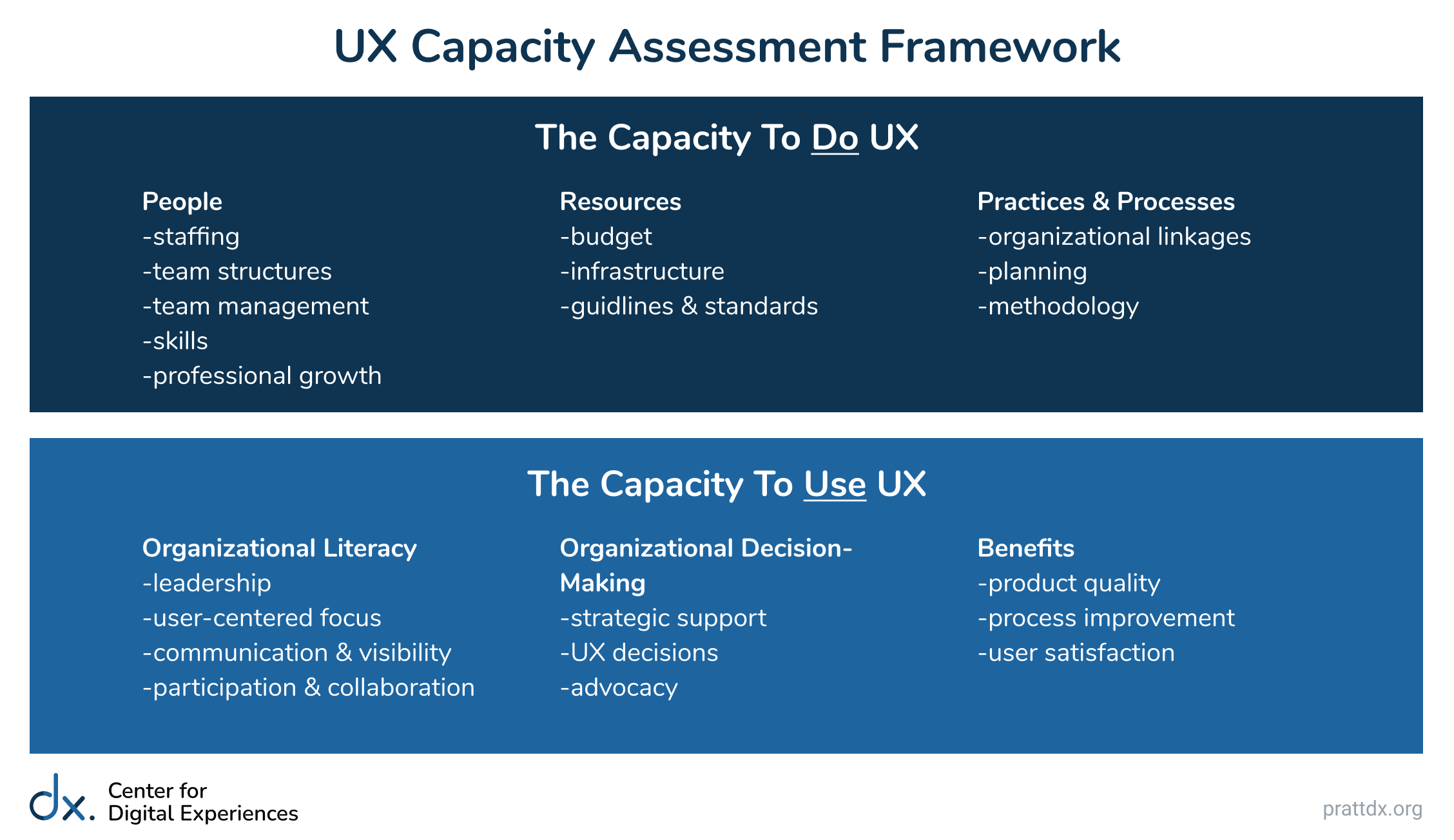Research Project
How can organizations better understand and strengthen their UX practices?
Table of Contents
Background
The User Experience (UX) industry’s rapid growth over the past decade has been largely driven by the desire of organizations across nearly every sector to create their own internal UX teams. But to realize the full potential of an effective in-house UX team, organizations must also make several adjustments to their existing practices and processes. They must also be able to:
- regularly monitor and collect user feedback;
- maintain sustainable processes to quickly analyze this feedback and use it to inform design changes; and
- effectively coordinate the work of all the teams involved in product design and development to implement these changes.
For many organizations, these adjustments require a making fundamental shifts to their operations, strategies, and culture. In other words, creating an in-house team is not enough; organizations must also begin to build a pervasive user-centered culture that:
- prioritizes user research,
- places value on the design process, and
- commits to the iterative cycle of assessment and improvement.
Unfortunately, many organizations are unable to create or sustain this culture due to a misunderstanding (or lack of awareness) of key UX principles, an inability (or unwillingness) to provide sufficient resources to support UX work, or some combination. As a result, UX can get pushed aside in favor of other priorities or the UX team is asked to do too much, leaving them under-resourced and over-burdened. Even organizations with a well-developed UX practice can find it difficult to sustain it due to high turnover, changes in leadership, or other external forces.
User Experience Capacity-Building (UXCB) is a solution to these challenges.
What is UXCB?
We define UXCB as the intentional work to continuously create and sustain overall organizational processes that make quality UX work routine. An organization’s UX capacity is their actual, enacted UX practices; UXCB is any activity intentionally designed to strengthen or sustain those practices.
Our UXCB conceptual model (see MacDonald, 2019) is a basic three-part model (show below) in which (1) the current conditions of an organization drive the selection of (2) strategies chosen to build UX capacity, which lead to (3) outcomes at the individual, organizational, and product levels. In turn, these outcomes create different conditions for future capacity-building initiatives, thus setting up UXCB as a continuous cycle of organizational growth and development.
UX Capacity Assessment Framework
UX capacity is split into two components – the capacity to “do” UX and the capacity to “use” UX – because an effective organization must be able to first select and apply UX design and research methods before they can incorporate insights gained from those methods. We developed the UX Capacity Assessment Framework (UXCAF; see MacDonald, Sosebee, & Srp, 2022) as a a tool to help organizations understand the strengths and limitations of their current UX practices, mainly in preparation for a UXCB initiative. The UXCAF includes 21 concepts split into six dimensions: people, resources, practices and processes, organizational literacy, organizational decision-making, and benefits.
Related Publications
Building User Experience (UX) Capacity to Support Digital Transformation: A Case Study of Cooper Hewitt, Smithsonian Design Museum
Full Paper
A Framework for Assessing Organizational User Experience (UX) Capacity
Full Paper
User Experience (UX) Capacity-Building: A Conceptual Model and Research Agenda
Full Paper



